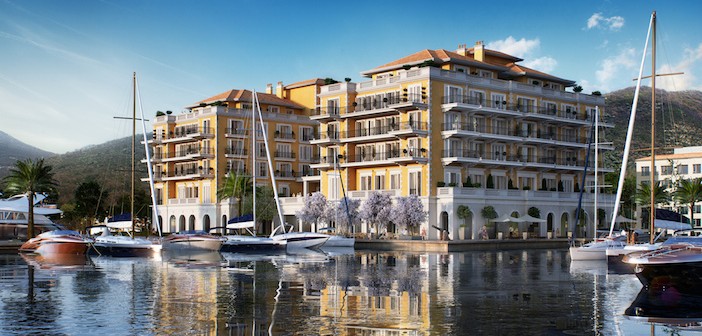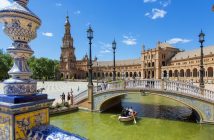Where to park your yacht? We’ve all been there. Circling around endlessly looking for a spot. Kids screaming in the back, Times crossword completed, supplies of junior caviar and non-alcoholic prosecco exhausted. ‘Is that guy going?’, you mutter to nobody in particular, more out of hope than expectation. Nope, he just hopped back on to get a business card for the Benz dealer he met at lunch. Every berth full. Christ, it’s hot behind the wheel. Desperation grows as you genuinely contemplate dropping anchor here and throwing everyone overboard to swim – how else to make your 2.30 reservation at La Colombe d’Or? Little Sebastian’s been looking forward to the rabbit stew for weeks.
Maybe I’ve overestimated how common a frustration this is. However, in a very real sense there is a genuine and chronic lack of available and desirable places to berth superyachts in parts of Europe. This is a need that Montenegro, blooming after years of strife and stagnation, is addressing, through the development of its breathtaking coastline and waterways. All around Boka Bay, within sight of the beautifully preserved medieval towns like Kotor, Perast and Risan, tasteful developments are being cultivated to cater to the kind of well-to-do traveller who can sail into town for the summer or for a holiday.
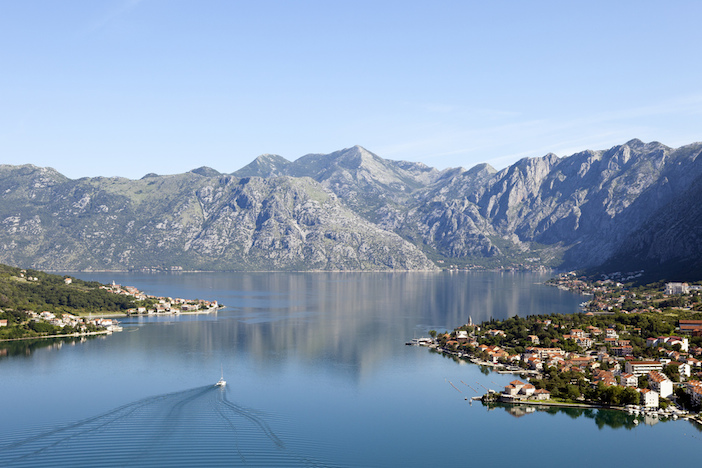
Porto Montenegro is one such development, open since 2009, visibly nearing completion and without any of the view-polluting unsightliness that blights many a new resort. Ten years ago, none of this was here; instead, numerous rusting boats lay submerged and rusting in the bay, overlooked by a hulking mass of industrial detritus, the decrepit remnants of the naval base and Arsenal military factory that occupied the site previously. The ambitious developers dragged out the boats, cleaned up the water and embarked on a building programme to create a marina village from the ruins, attractive to the wealthy tourists they intended to entice, and yet respectful of the area’s aesthetic, as well as its industrial heritage.
The results are striking. Porto Montenegro is a few minutes’ drive from Tivat’s airport, perched serenely at the water’s edge, and arriving in the car doesn’t really give any indication of what to expect. This is because the main road approaches from the rear (so as not to spoil the tremendous sea views available pretty much anywhere in the resort). Secondly, the developers insisted upon a fairly strict limit in the story-count of the resort’s various buildings, with nothing more than four or five floors high. This helps it to blend elegantly into the lakeside, without looming gaudily over its surroundings.
Walking through the apartment buildings to the first row of boats gives us an opportunity to take stock of the place. To the left are narrow streets lined with upmarket shops, yacht and property services, and an array of bars and restaurants – Mediterranean fare, sushi, upmarket ice cream, it’s all here. To the right is the jewel in the crown, the Regent Porto Montenegro hotel: 35 rooms and 51 residences, fine dining, a majestic spa, and a scarcely believable meeting/entertainment space which sits as if floating on a water garden, facing out to sea. And in the middle of all this, the boats. Hundreds of pristine boats, ranging from the motorized dinghies used to ferry staff around, through sloops, ketches, yawls and schooners (yes, these are words) right up to the 100 metre behemoths tethered to the edge of the furthest berths, sitting, static, in the late-afternoon sun. The biggest berths allow for 150 metres of yacht; a boat so big it would take Usain Bolt 15 seconds to run end to end. Deck-hands scrub their vessels languidly while some faint Euro-house leaks from the odd cabin window. A beautiful tortoiseshell cat stretches determinedly in the shade behind the refuelling station, staying out of the midday heat. Everywhere is busy and yet peaceful at the same time.

We’re staying in a generous apartment facing out onto the marina, and we take a minute to enjoy a cold beer on the private terrace. The nature of Porto Montenegro means that owner-occupancy is the exception rather than the rule, and as the Regent was still making final preparations before welcoming guests, we took up residence in an unoccupied flat. It’s great option for travellers wanting the lifestyle and the location, but the freedom to self-cater.
Speaking of the lifestyle, we’d better get on a boat! At the appointed hour of the morning, we congregate at the designated spot and find ourselves standing at the pier-side staring out at what can only be described as an enormous faux-longboat. Every other vessel seems to be a slick, silver-grey slice of nautical comfort, ready to cut quietly through the surf while inhabitants sip bubbles on the top deck. But this thing looks like a novelty restaurant; in fact I’m not even sure that it’s motorized. Just when I’m trying to work out which end is the front, a small speedboat chugs into the channel just in front of this monstrosity and its captain shoots us a grin and welcomes us aboard. Phew.
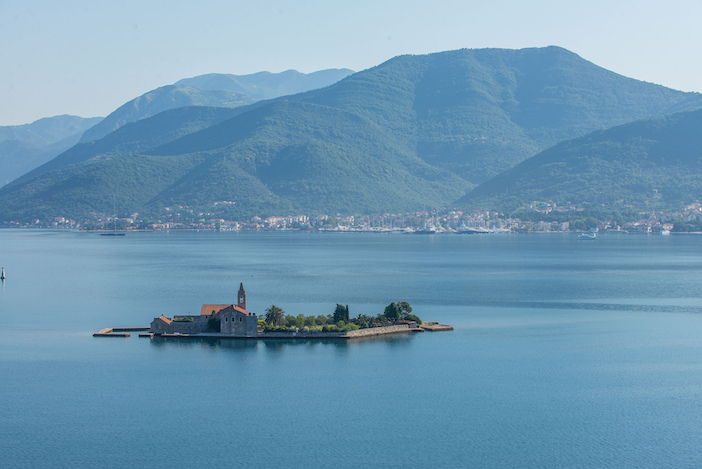
In a few minutes we’re clear of the yachts and skipping over the surface, through the narrow strait that leads of the Bay of Kotor, a UNESCO World Heritage Site since 1979. The mountains climb so steeply either side of the water that rainfall is clearly visible at some of the peaks; down at sea level it’s gloriously sunny, as we circle around the two tiny islets just beyond the bay’s entrance, Sveti Đorđe (St. George) and Gospa od Škrpjela (Our Lady of the Rocks). Both are home to tiny chapels, although the latter is an artificial island, built on a rock after two sailors found a picture of the Virgin Mary on it in 1492.
From the boat we can see just how well preserved Perast, Risan and Herceg Novi are, their red roofs scattered by the water, their ancient churches and fortresses lovingly maintained. Before we have time to get sunburnt we arrive in Kotor, crouching behind the original fortified walls and with a rocky staircase snaking back and forth up the hillside to the fortress of Sveti Ivan – a formidable climb. Four centuries of Venetian rule are evident in Kotor’s architecture, and although repeated earthquakes did their best to destroy it, it still hosts a surprisingly large number of permanent residents, along with numerous charming hotels.
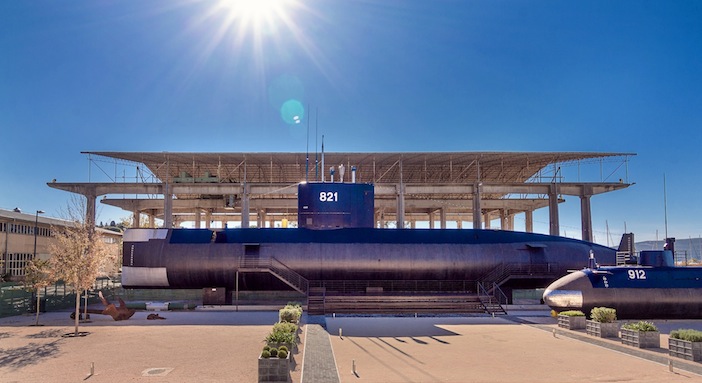
Back at Porto Montenegro, in the height of the afternoon sun, there’s only one thing to do, really: get in a decommissioned 1960s Soviet submarine. Luckily there’s one sitting, magnificently unspoiled, next to the Naval Heritage Museum at the north end of Porto Montenegro. The Museum guards the area’s history diligently, and also provides a great space for events – there’s a packed schedule of exhibitions and live music throughout the summer. The submarine itself is called Hero and was last operational in the early 90s, diving as deep as 210m with a crew of 28 manning four torpedoes. Check out the scary toilet tucked behind a curtain – not one for the faint of heart.
Finally it’s time to embraced the lifestyle wholeheartedly and head to the pool. As you’d expect of a luxury village built for superyacht owners, this is no ordinary lido. Instead it’s the stuff of dreams – 64 metres of shimmering infinity pool, stretching out to meet the bay sparkling in front of us, yachts bobbing quietly over to the left, stunning hills rising behind us. A large frame hovers over the pool halfway down so that when you enter from the shallow end, it captures the view for you and emphasises the implausibly good scenery. Day-beds and cabanas flank the pool on each side, and we sink happily into them for a late-afternoon snooze. Tom Waits (smooth 1974 Tom Waits, not gargling-broken-glass 2014 Tom Waits) is crooning plaintively from the discreet sound system, and some saint slips a mojito into my hand. If there’s a better poolside experience in luxury travel, I’m yet to find it.
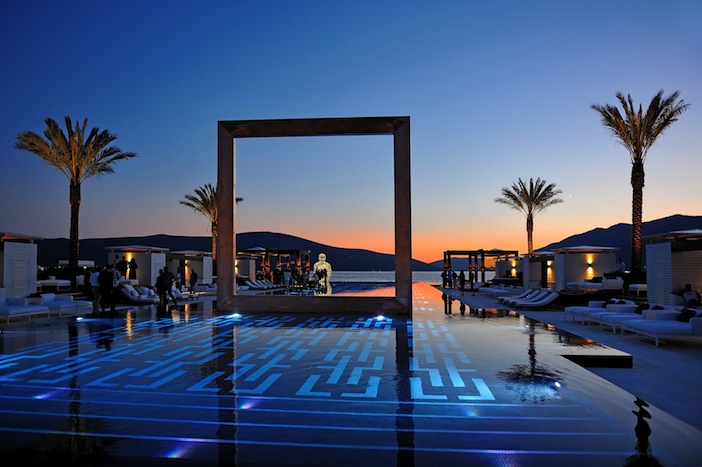
With a heavy heart we eventually have to abandon our superyacht lifestyle and sail on out of there. However this place will no doubt be popular with its target market, as well as the 300 local staff it employs. Efforts have been made to make this a permanent destination, rather than a summer fly-by – note the Knightsbridge international school, open since 2010 and taking pupils from 3-15 years old – and so far this is a successful story of the respectful regeneration of an oft-overlooked corner of Southern Europe. It’s a fine place to drop anchor, take a dip, explore the Bay of Kotor and enjoy many a cocktail.
The Regent Hotel Porto Montenegro opens on Friday 1st August 2014. Rates start from €250 (approx. £200) per room per night based on two people sharing. For more information visit the website here or call +382 (0)32 660 660.
For more information about Porto Montenegro, the village and its amenities, including a berth map to work out where to park, visit the website here.

